Rage Against the Machinery
In which Norm spins up the new 4K releases of CATCH-22 and ONE FLEW OVER THE CUCKOO'S NEST.
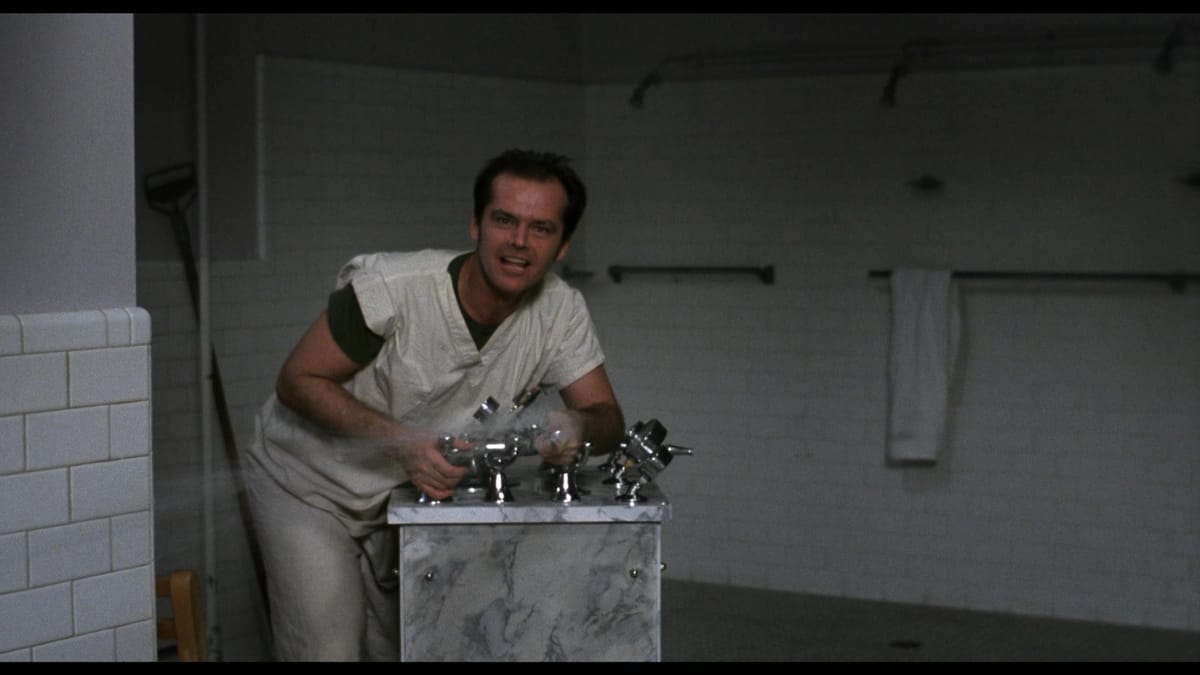
Audiences love an iconoclast. Heroes who challenges the status quo – daring the people around them to wake up and realize society is crazy, rigged or downright cruel – are a great way to get us invested in an uphill battle against structures or systems we’d never consider challenging in our daily lives.
Joseph Heller’s Catch-22 and Ken Kesey’s One Flew Over the Cuckoo’s Nest were both published in the early ’60s, but didn’t make it to the big screen until 1970 and 1975, respectively. One was instantly hailed as a masterwork, and the other received as an overblown misfire. And now that both films are arriving on disc in new 4K restorations from Shout! Studios and Warner Bros. Discovery Home Entertainment, respectively, the really interesting thing about them is that they’re the same movie … and they’re not the same movie at all.
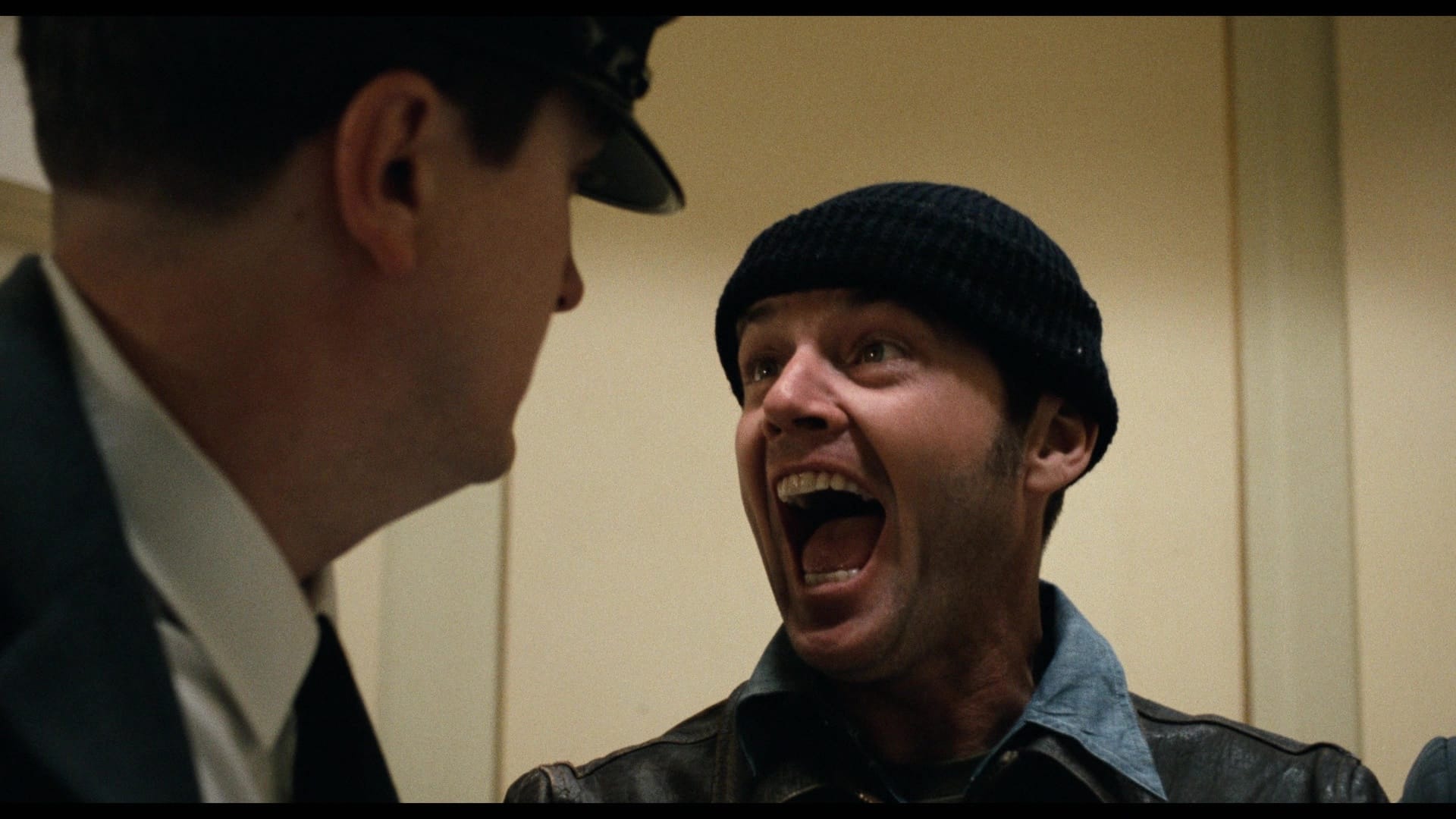
A critical and commercial success on its release in 1975 – and one of only three films to win Oscars for Best Picture, Actor, Actress, Director and Adapted Screenplay – Cuckoo’s Nest has been anointed as a modern classic for the last half-century. But Catch-22 hasn’t been remembered as fondly; indeed, despite Nichols’ reputation and its truly remarkable cast, Paramount never even bothered with a Blu-ray. Shout’s release feels like a corrective, or at least a chance to put the movie back into the world.

Catch-22 was Nichols’ follow-up to The Graduate, and expectations couldn’t have been higher; the director of a landmark American satire tackling a beloved antiwar novel, with Graduate co-writer Buck Henry as his screenwriter and rising star Alan Arkin seemingly a perfect fit as the frantic Captain Yossarian, a WWII bomber pilot on the verge of a breakdown after surviving dozens of dangerous missions, and desperate to be rotated out of duty. As Heller’s maxim goes, a man in that situation would have to be crazy to keep flying … but wanting to stop demonstrates his sanity, and thus he cannot be relieved of duty.
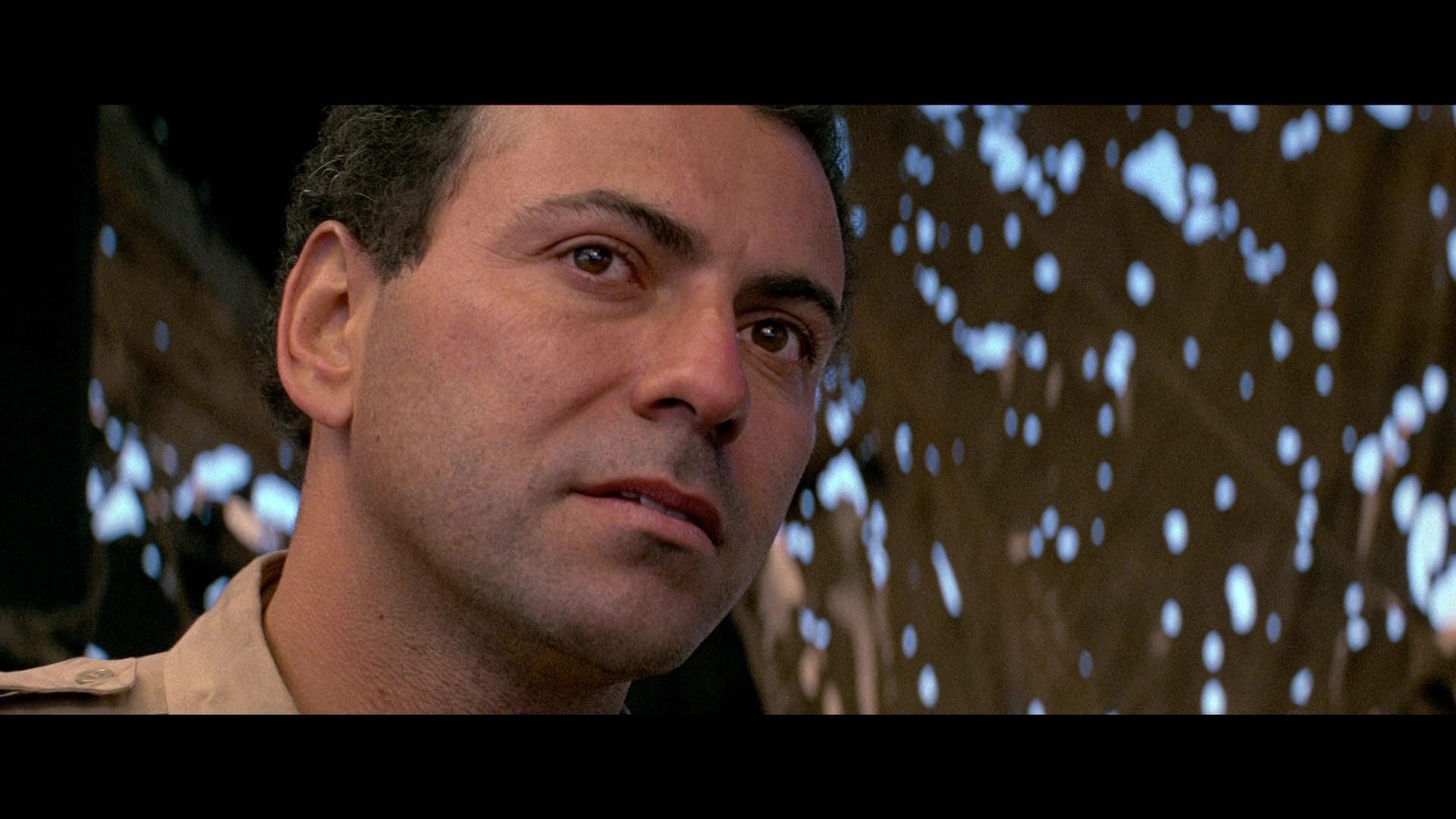
As Yossarian keeps trying to get someone to understand how close he is to cracking under the strain, other men on the base learn how to manipulate the military bureaucracy, amassing status or power – or just cashing in – by dumb luck or bleak cynicism. Captain Major (Bob Newhart) is promoted to Major because the base needs a squadron commander and his last name is Major; it doesn’t matter that he’s never flown a single mission. Supply officer Milo Minderbinder (Jon Voight) becomes a war profiteer because he has access to the warehouse and no ethical compass. The war has given everyone license to do whatever they want, and no one – no one at all – wants to do anything heroic. It’s madness, you see! Madness!
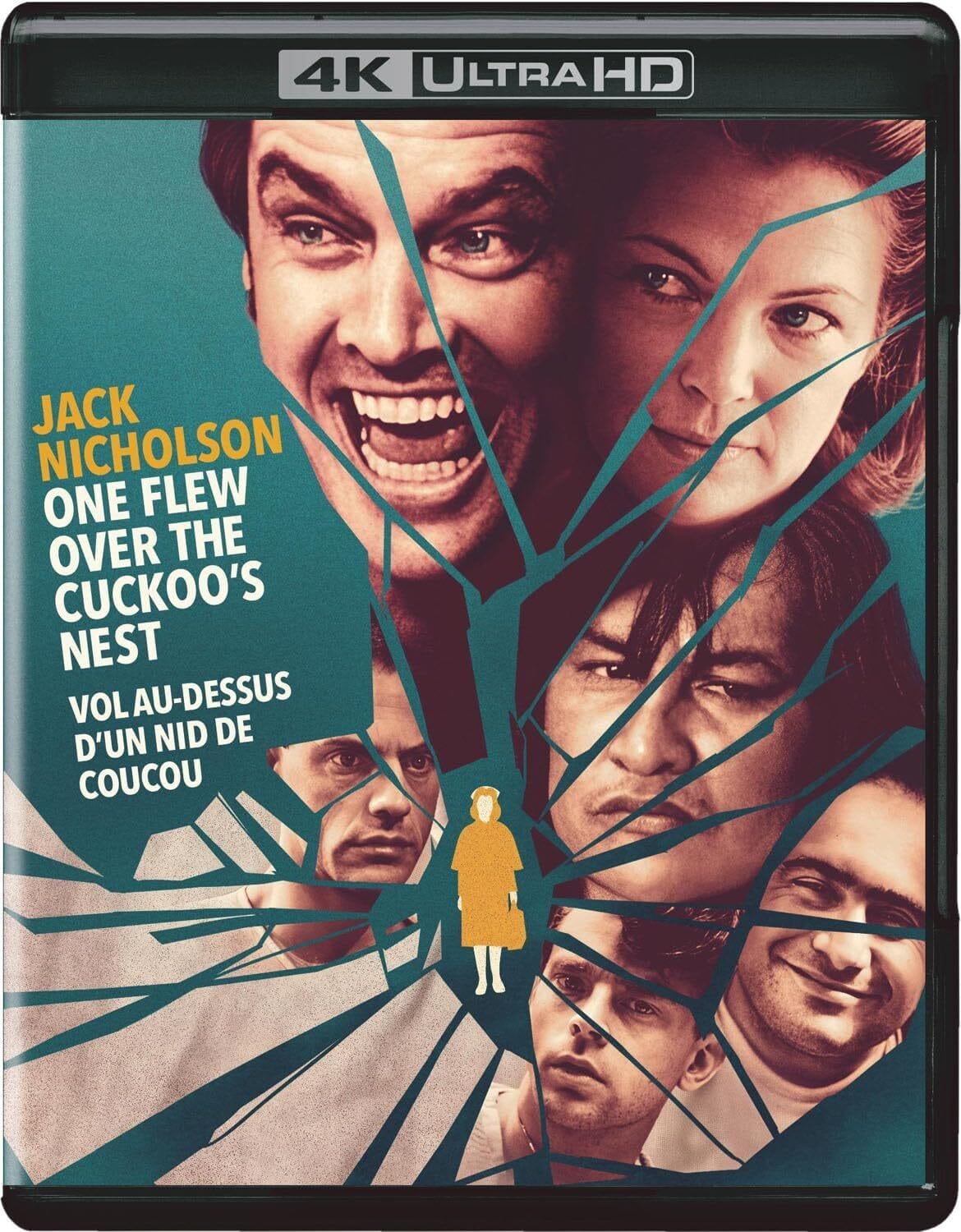
One Flew Over the Cuckoo’s Nest is also about a man trapped in a madhouse, except in this case it’s not a metaphor; Ken Kesey’s 1962 novel used the psychiatric confinement ward at Oregon State Hospital as an allegory for America, man – though Forman’s adaptation, written by Laurence Haubman and Bo Goldman, leaves that in the background to focus on the more immediate battle of wills between Nicholson’s convicted statutory rapist R.P. McMurphy – trying to dodge a sentence of five years’ hard labor by getting himself committed – and Louise Fletcher’s imperious Nurse Ratched, who can’t brook the challenge he represents.
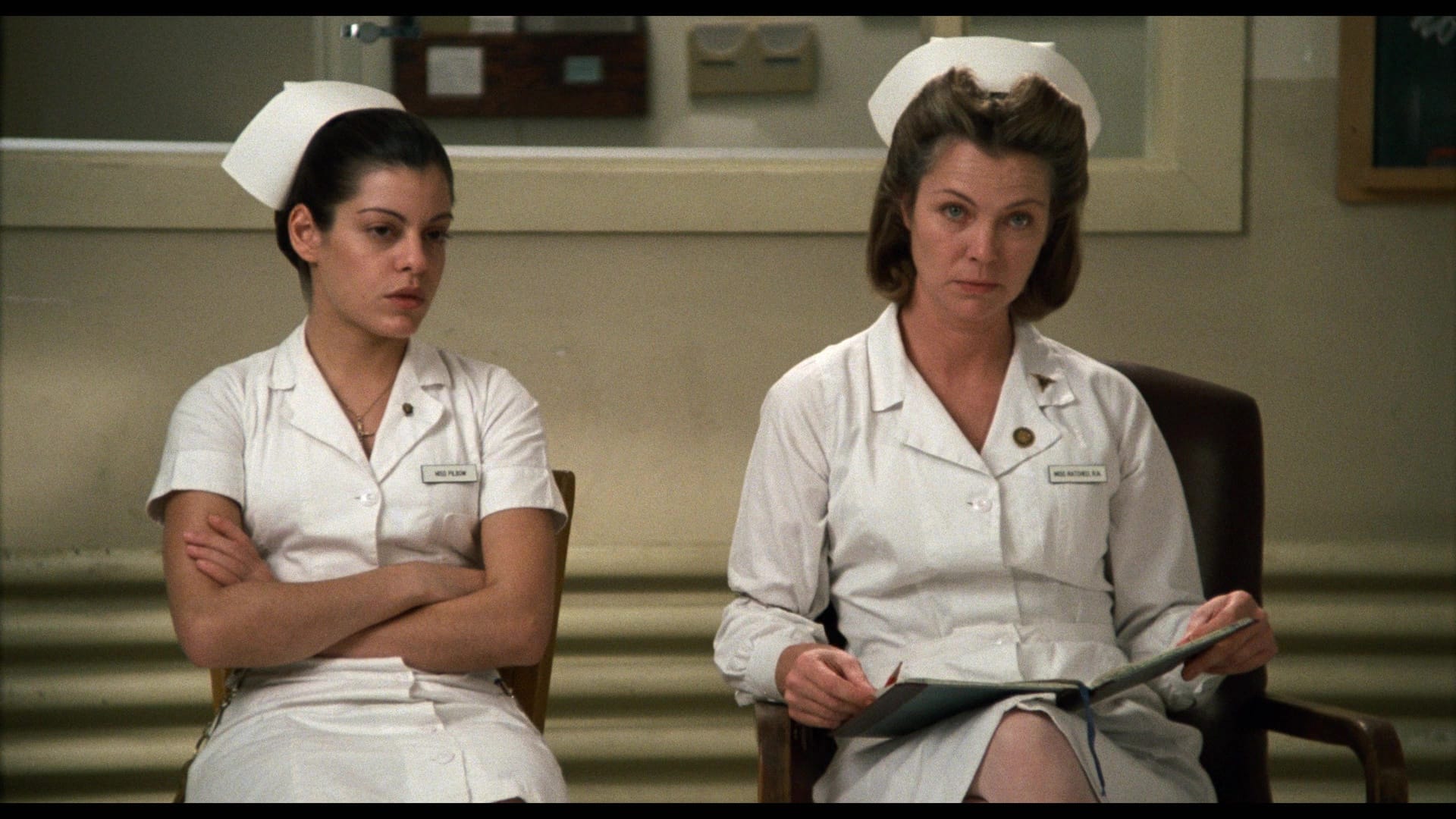
From one angle, Ratched is right: McMurphy is a reprobate, an irreverent troublemaker who does everything he can to derail her attempts to tend to the patients in her care. He swears the girl he slept with told him she was 18, but he’s 35 if he’s a day, which makes him a scoundrel as well as horndog in her eyes. Her judgment is not entirely wrong; McMurphy does seem like an asshole, and he does seem to be determined to undermine Ratched’s authority because she sees right through his plan to game the system. But the thing is, McMurphy isn’t wrong either: Ratched is a bigger threat to the inmates of Omaha State than he is. And to him as well, though he doesn’t clock that until it’s far too late.
So why should one film have been embraced immediately, while the other took decades to be rediscovered? I have some thoughts.
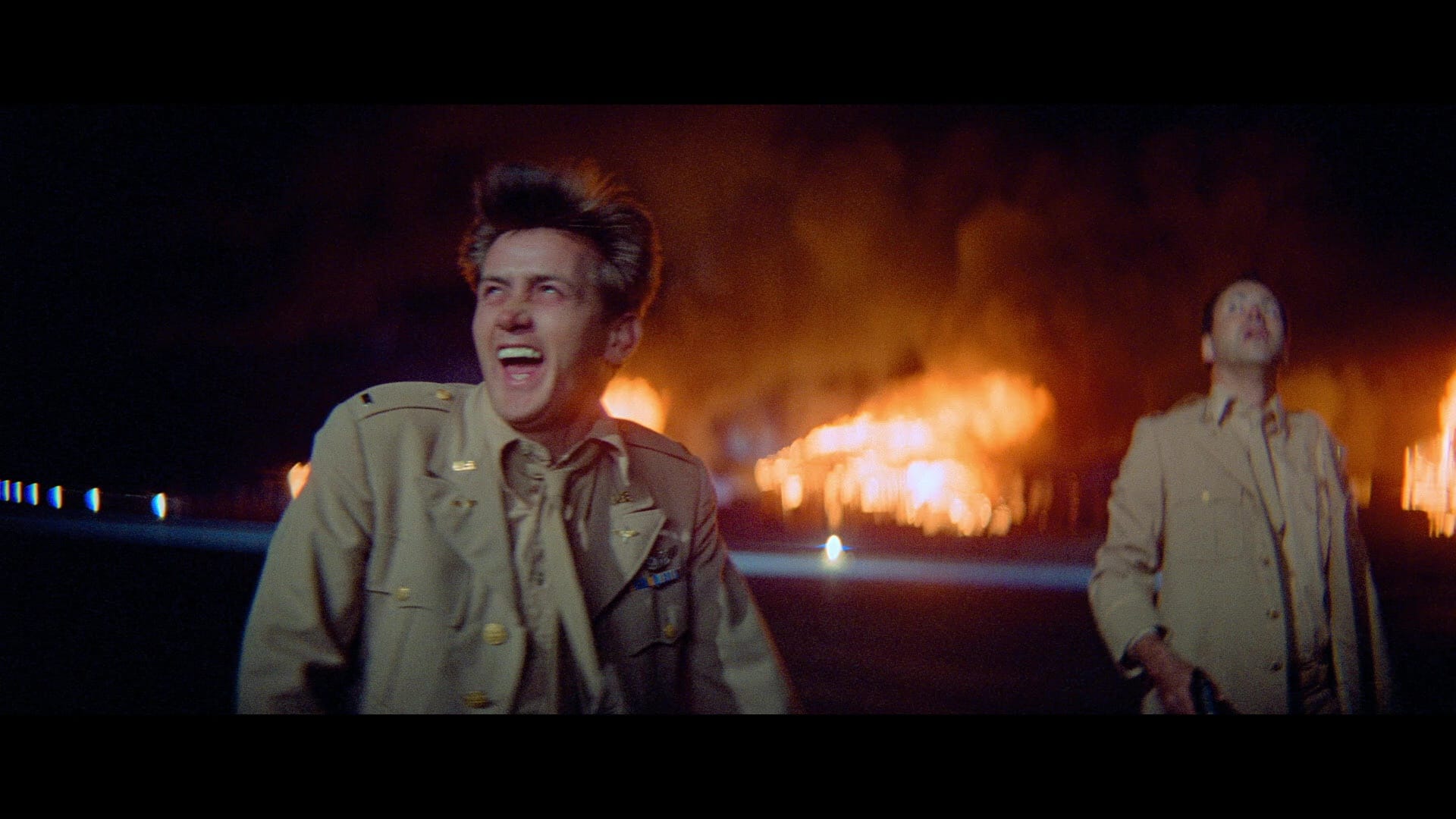
Maybe it’s a question of tone. In Catch-22, Nichols tries to honor the absurdist rhythms of Heller’s book by bringing them right onto the screen, staging scene after scene of circular conversations in which Yossarians’ protests and objections are refuted or rejected by one authority figure after another, all the way up the chain. Nichols’ decision to shoot a number of these conversations as single takes works against the pacing, too; we’re clearly meant to feel Yossarian’s impatience, but being stuck in these exchanges just makes it more jarring when they end, and we’re thrust back into chaotic-farce mode.
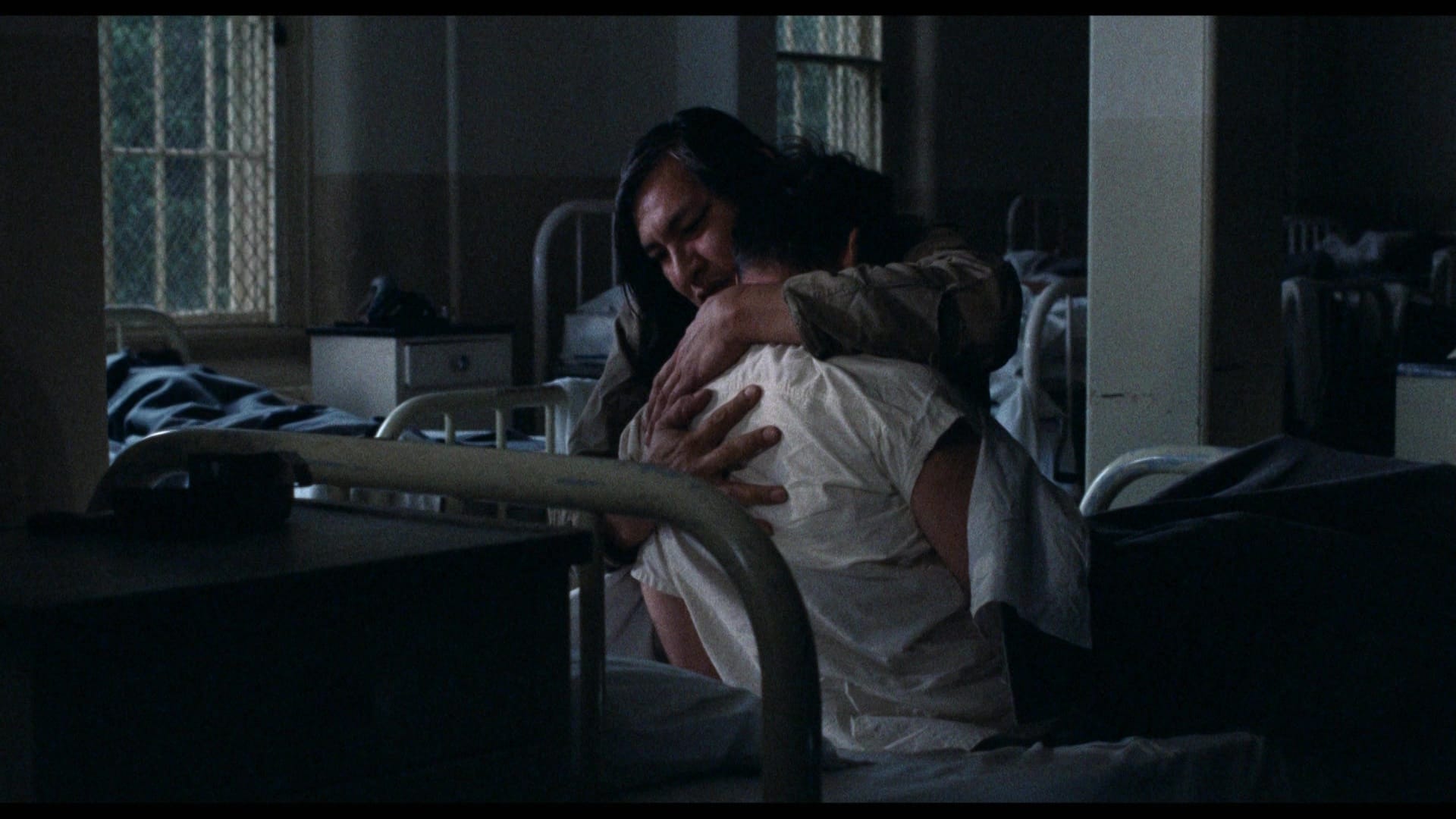
Five years later, Forman would give Cuckoo’s Nest an undercurrent of sadness, mourning McMurphy’s destruction from the moment he arrives at Oregon State; he can scrape out some moments of rebellion, and because that’s Jack Nicholson up on the screen we can fool ourselves into thinking this guy might even be able to outsmart the system or even charm his way out of it. But Forman knows he won’t, and he prepares us for it by undermining the verité-style institutional cinematography (shot at various points in production by Haskell Wexler, Bill Butler and William Fraker, three absolute masters) with a gentle, elegiac tone; even when the characters are having fun, this story is a tragedy.
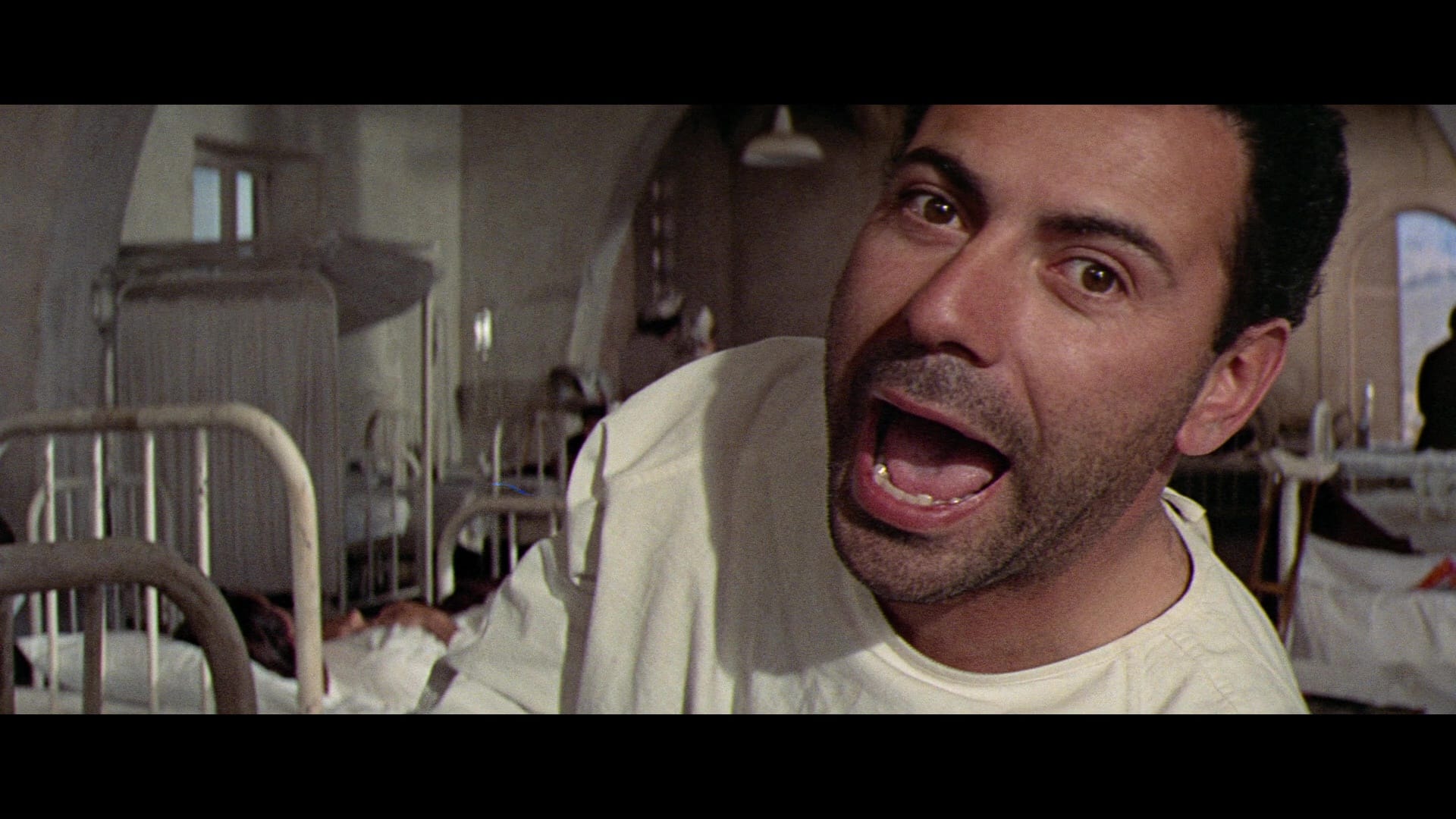
Maybe it was just the difference between opening an anti-war allegory in 1970, when Vietnam was raging and Americans were still dealing with the rise of Nixon and the collapse of the counterculture as a political force; Catch-22 didn’t flop, but it didn’t make the money it was expected to, and Nichols returned to small-scale psychodrama with Carnal Knowledge – which stars Nicholson, of course.
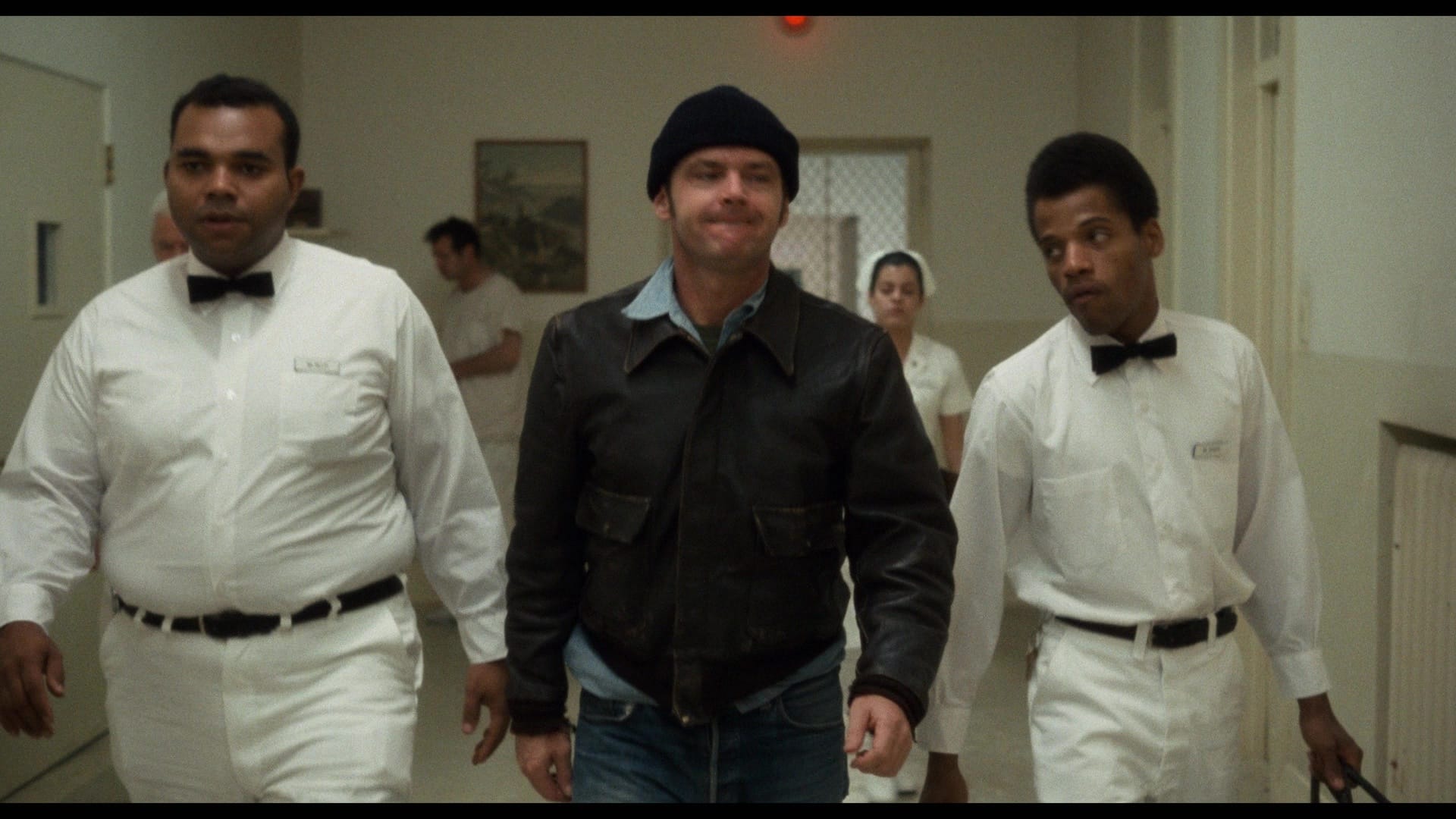
Five years later, the cultural landscape was ready to receive Cuckoo’s Nest, which was much more elliptical about its messaging, speaking gently despite its emotional intensity and psychological (and physical) brutality. I dare say Forman also manages his ensemble a little more adroitly than Nichols, juggling a remarkable array of expressive new faces like Will Sampson, Danny DeVito, Christopher Lloyd, Brad Dourif and Vincent Schiavelli, among others, and making sure we catch their individual arcs unfolding at McMurphy’s urging, even if they’re mostly overshadowed by Nicholson’s whirlwind performance. Which is the point, of course.
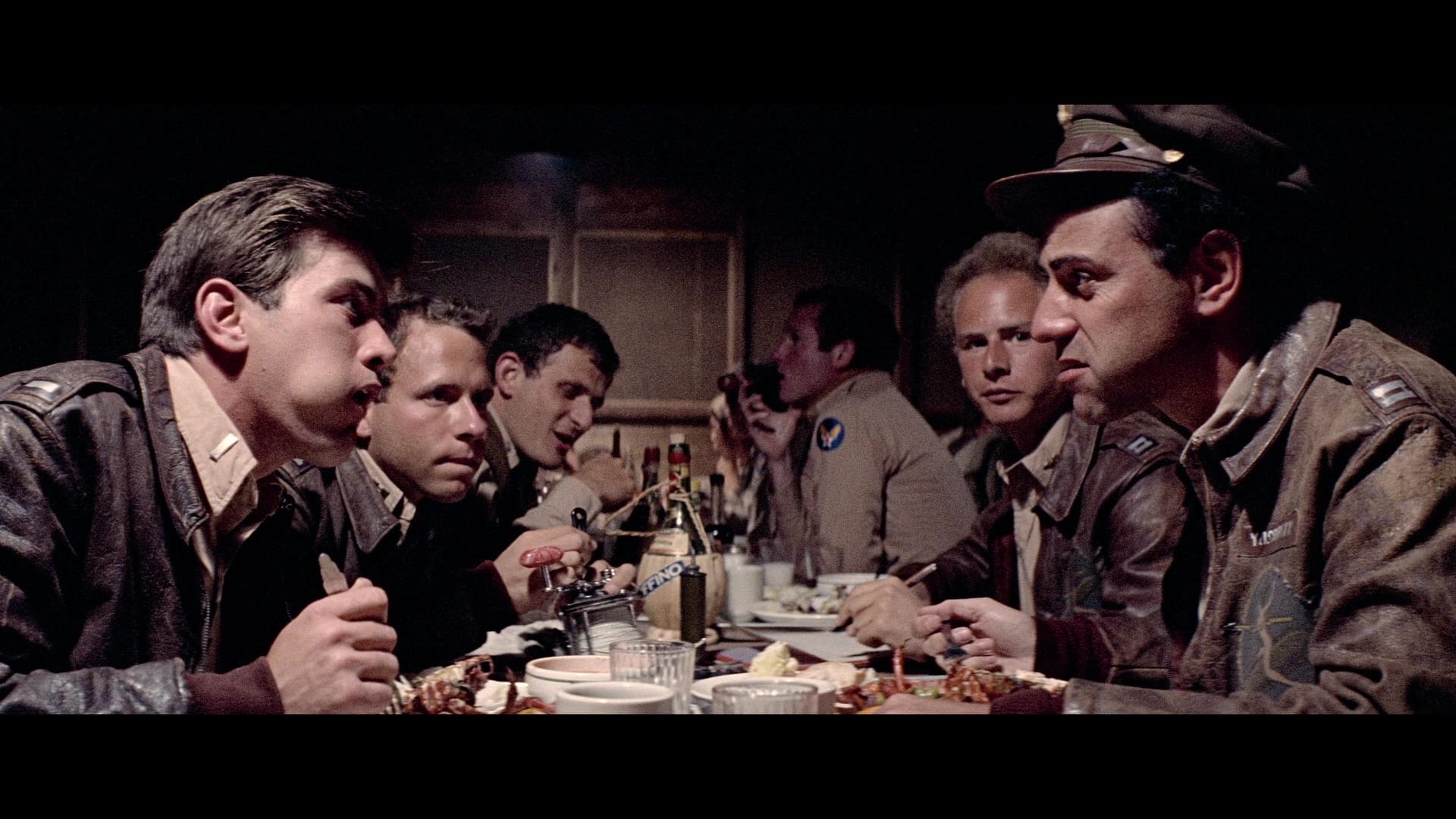
Or maybe it’s just that despite all of its tweaks and character shuffling – the only way to squeeze a book as dense as Heller’s into a two-hour feature – Catch-22 doesn’t feel like it lives and breathes as a movie in the way that Cuckoo’s Nest does. Fifty years and three generations of actors later, it still feels like an unrepeatable, alchemical event; everything lined up perfectly, from the material to the performances to the cultural moment. 1975 was a hell of a year, after all.
As for the 4K discs themselves, both films are presented in immaculate Ultra High Definition masters; to see how good Catch-22 looks, just compare Shout’s restoration to the theatrical trailer included on the Blu-ray disc – a straight clip of the scene where Jack Gilford’s flight surgeon explains the eponymous regulatory speed bump to Arkin’s frantic Yossarian. The trailer looks weatherbeaten; the restoration looks freshly printed. Audio options are 2.0 mono and 5.1 remixed surround, just as they were on the Paramount’s 2001 DVD.
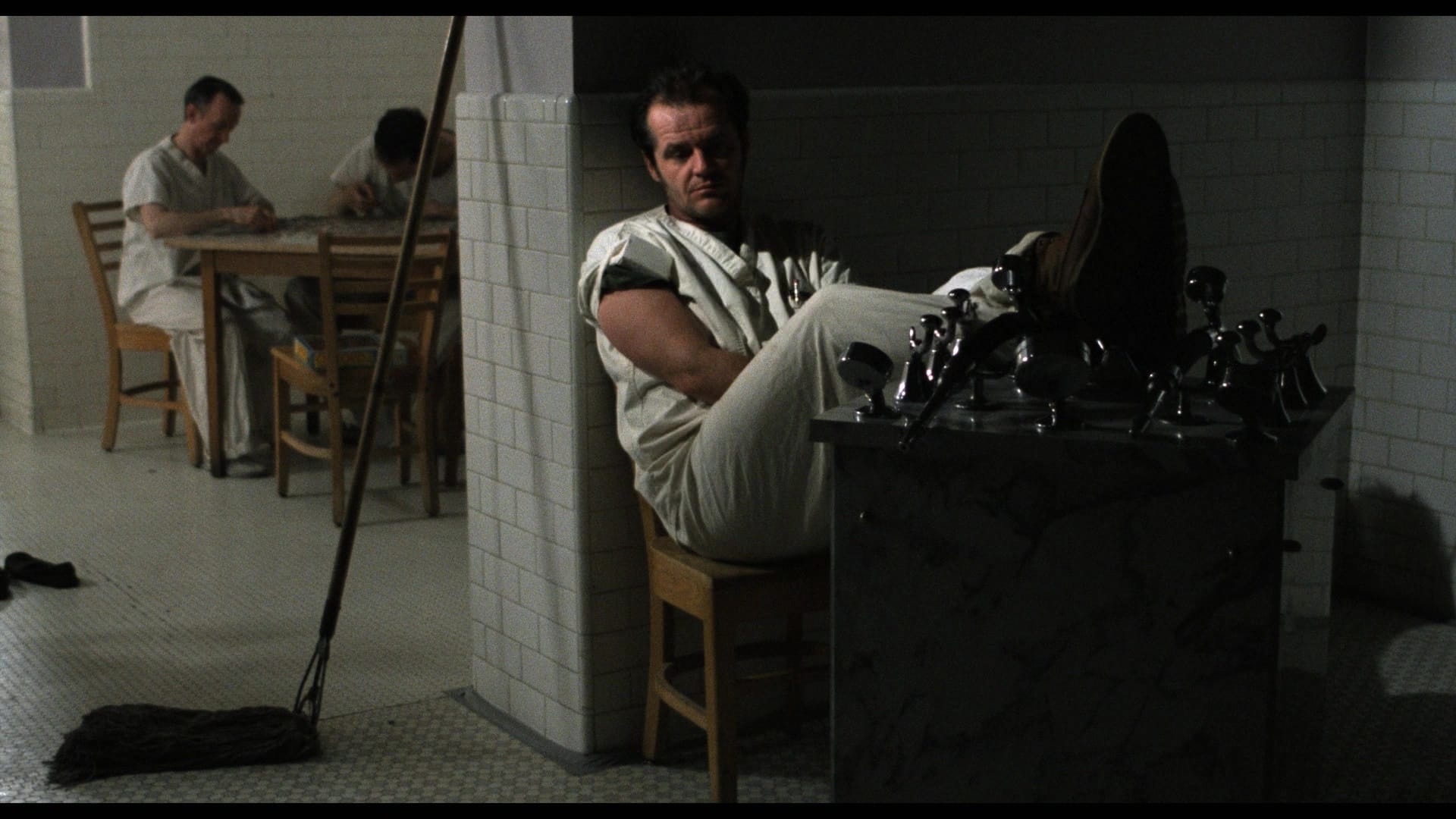
Cuckoo’s Nest is downright pristine, with the grainy shadows and sickly lighting within Omaha State giving way to vibrant, colorful exteriors. The inmates’ impromptu fishing trip takes place against a sky that’s bluer than anything else in the entire picture, and we miss it when it’s gone. The original mono soundtrack is available for the first time on disc, along with a DTS-MA version of the 5.1 remix created for earlier Blu-ray releases.
Shout’s supplements for Catch-22 may only be pair of audio commentaries, but these are some high-value tracks. A freshly recorded commentary from Drew McWeeny offers a sense of both Nichols’ and Arkin’s legacies and argues for the film as an essential entry in both of their filmographies, while the archival track, produced for Paramount’s 2001 DVD, pairs Nichols with Steven Soderbergh for an insightful, entertaining conversation about filmmaking, the New American Cinema movement and the impossibility of producing a satisfying adaptation of Heller’s supposedly unfilmable novel.

Soderbergh was actively trying to bring John Kennedy Toole’s similarly regarded A Confederacy of Dunces to the screen when this commentary was recorded, so this is both a perfect pairing of filmmakers as well as a melancholy reminder of what might have been. The small photo gallery hasn’t been carried over from Paramount’s DVD – a small but curious absence.
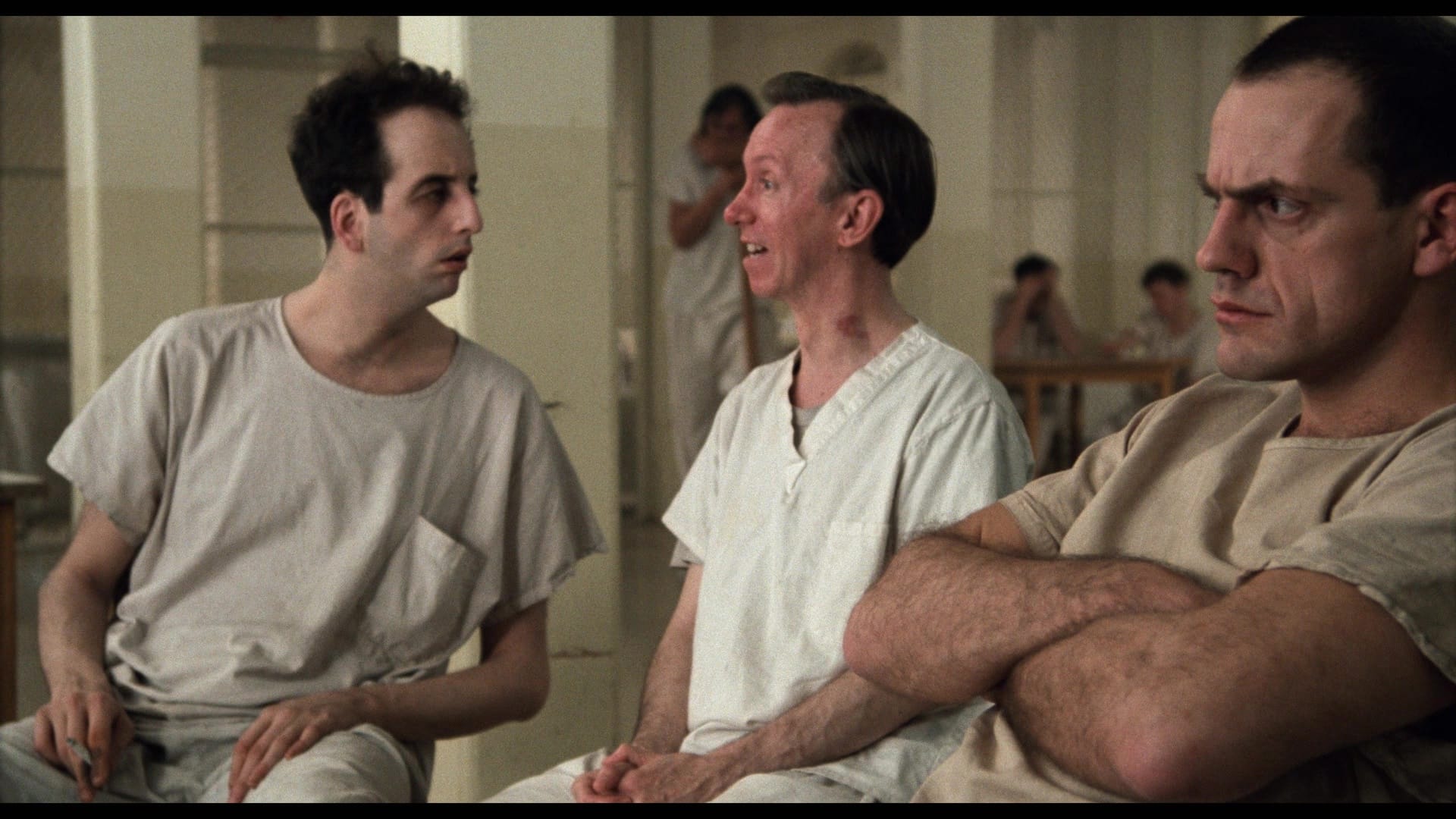
The supplements on One Flew Over the Cuckoo’s Nest are even curiouser: The half-hour documentary “Asylum: An Empty Nest for the Mentally Ill?” included on Warner’s 2010 Ultimate Collector’s Edition has been dropped, along with three deleted scenes and a LaserDisc-era audio commentary by Forman, producer Saul Zaentz and producer Michael Douglas. It’s curious because the feature-length Completely Cuckoo documentary was produced for the same Pioneer Special Edition LD release as the commentary, and it’s here in its entirety (despite being listed as a “featurette”), along with five other deleted scenes. Weird.
To compensate, Warner has also commissioned two brief but very engaging featurettes that reunite producer Douglas with co-stars DeVito, Dourif and Lloyd over Zoom to reminisce about the production.
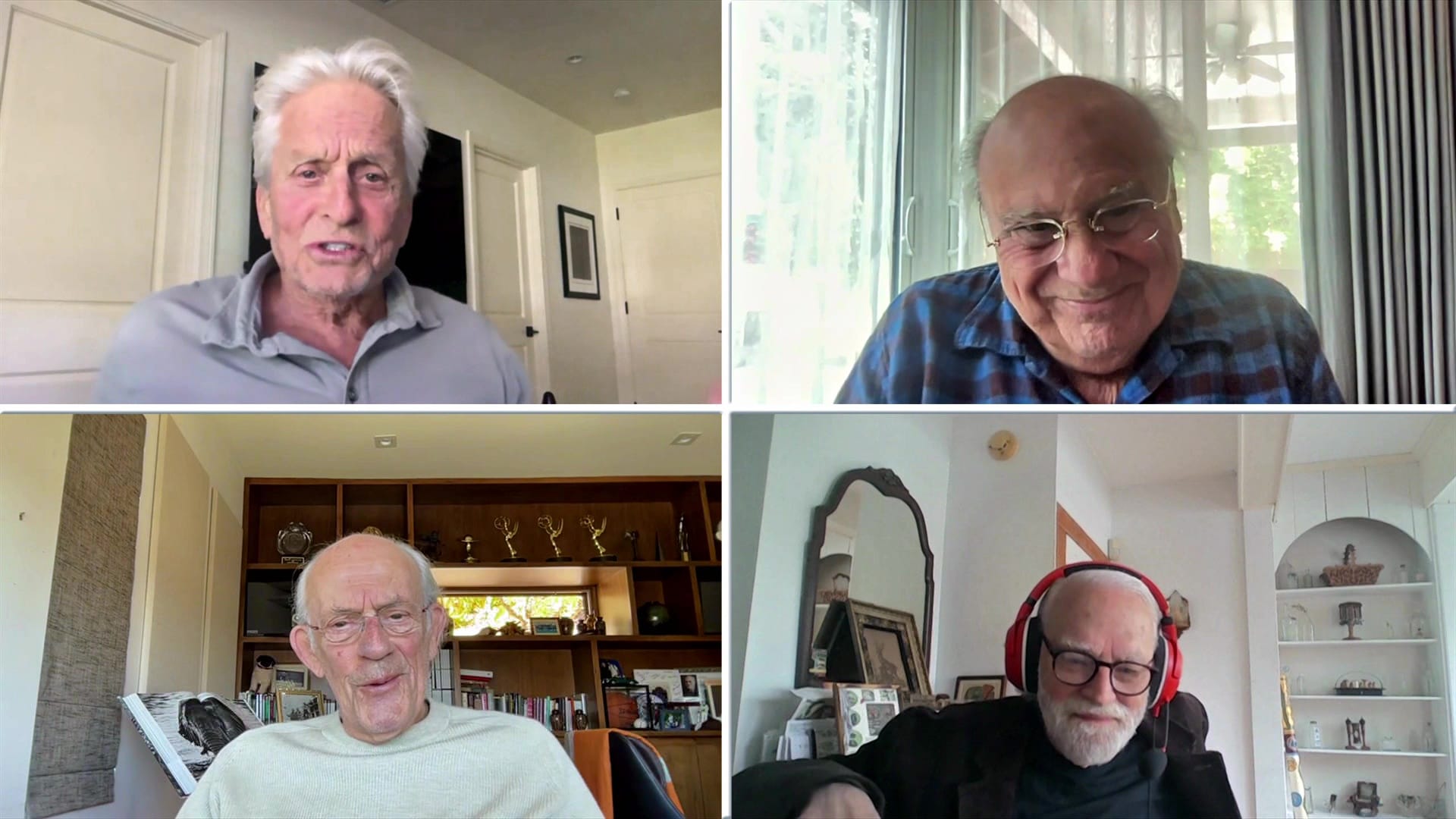
“Conversations on Cuckoo: Group Therapy” focuses on the film’s casting, with everyone (rightly) praising Nicholson and Fletcher while discussing the impact the movie had on their own lives and careers. And “Conversations on Cuckoo: Moviemaking Memories” lets Douglas – looking more than ever like his father – talk about his efforts to bring the book and stage play to the screen with its spirit intact, while the actors trade anecdotes about Forman (everyone has an impression of the director’s stern delivery) and the freedom he gave them – and how Nicholson seemed determined not to outshine his younger co-stars, to the point of doing his best to be one of the gang when shooting ended for the day.
It’s also just nice to see all of these legends in casual conversation, clearly happy to have an excuse to revisit a project they all enjoyed making. You can make art and friends at the same time, after all.
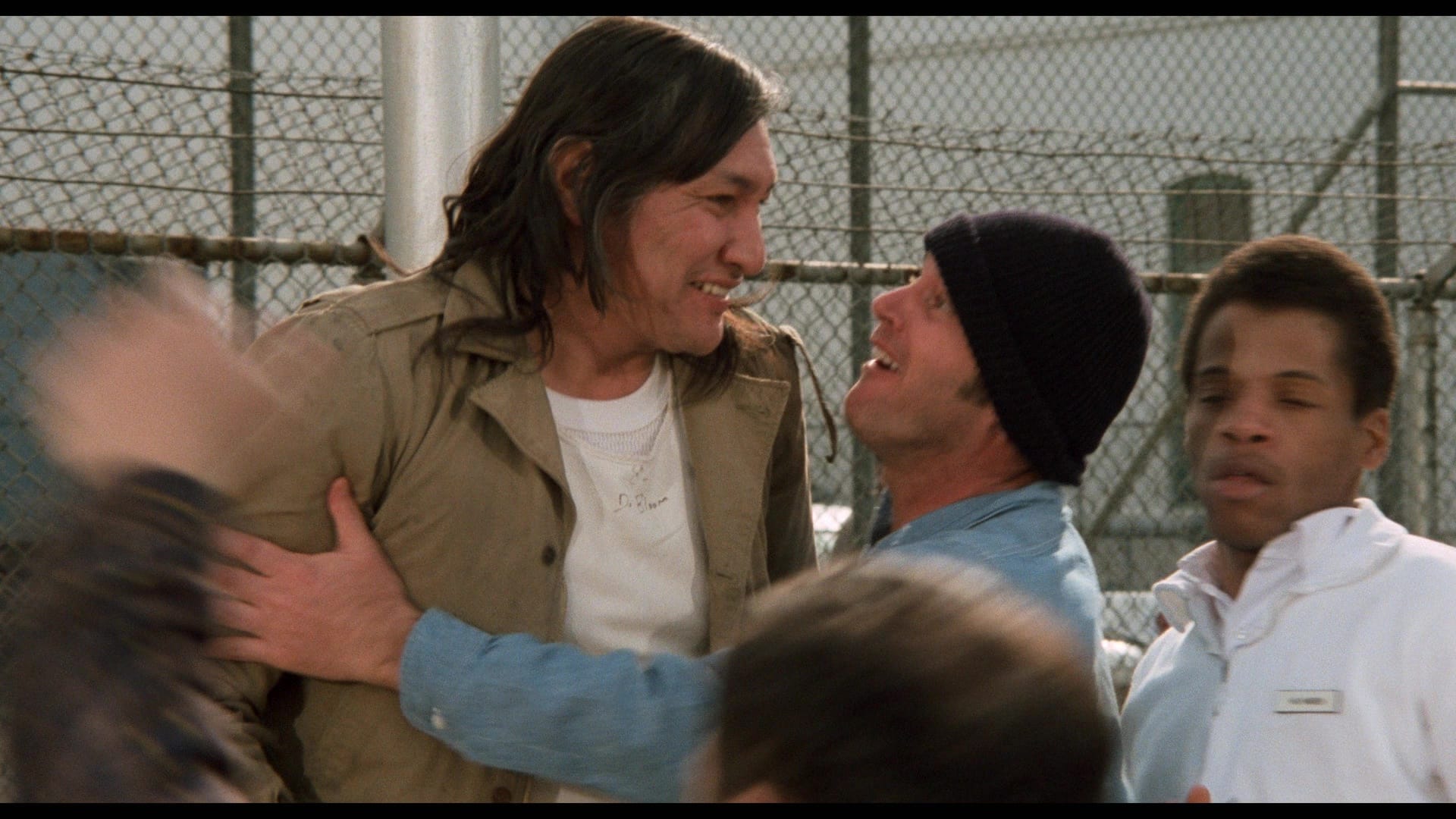
Now: Since you’ve read this far, you qualify for another giveaway! Universal Pictures Home Entertainment Canada has two copies of Downton Abbey: The Grand Finale for Shiny Things readers who like their upstairs-downstairs drama polished to a fine shine; just e-mail normwilner@gmail.com by 3pm ET tomorrow (Monday, November 10th) with the subject line “Matthew Crawley Got a Raw Deal” and the winners will be selected at random. Canadian recipients only, I’m afraid. Sorry for the tight turnaround.
Catch-22 is now available in a 4K/Blu-ray combo from Shout Studios. The 4K release of One Flew Over the Cuckoo’s Nest is on shelves Tuesday, November 11th, from Warner Bros. Discovery Home Entertainment.
Up next: The Naked Gun makes it okay to laugh at diarrhea again. And admit it: You know you want to.
